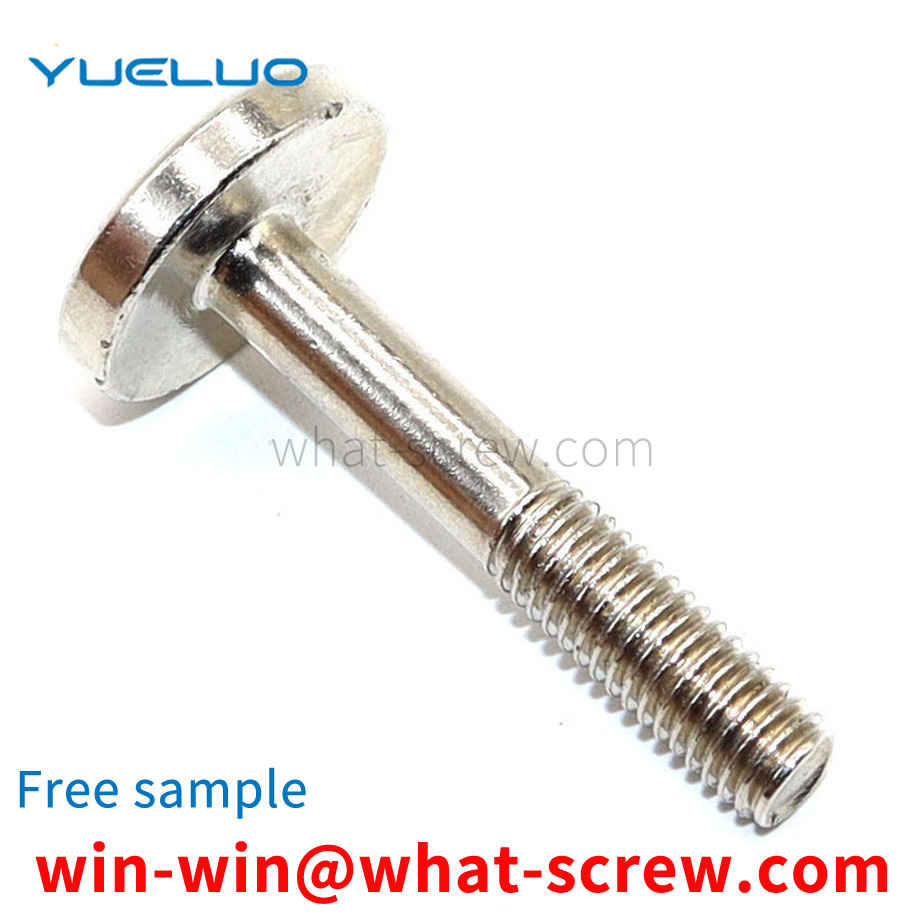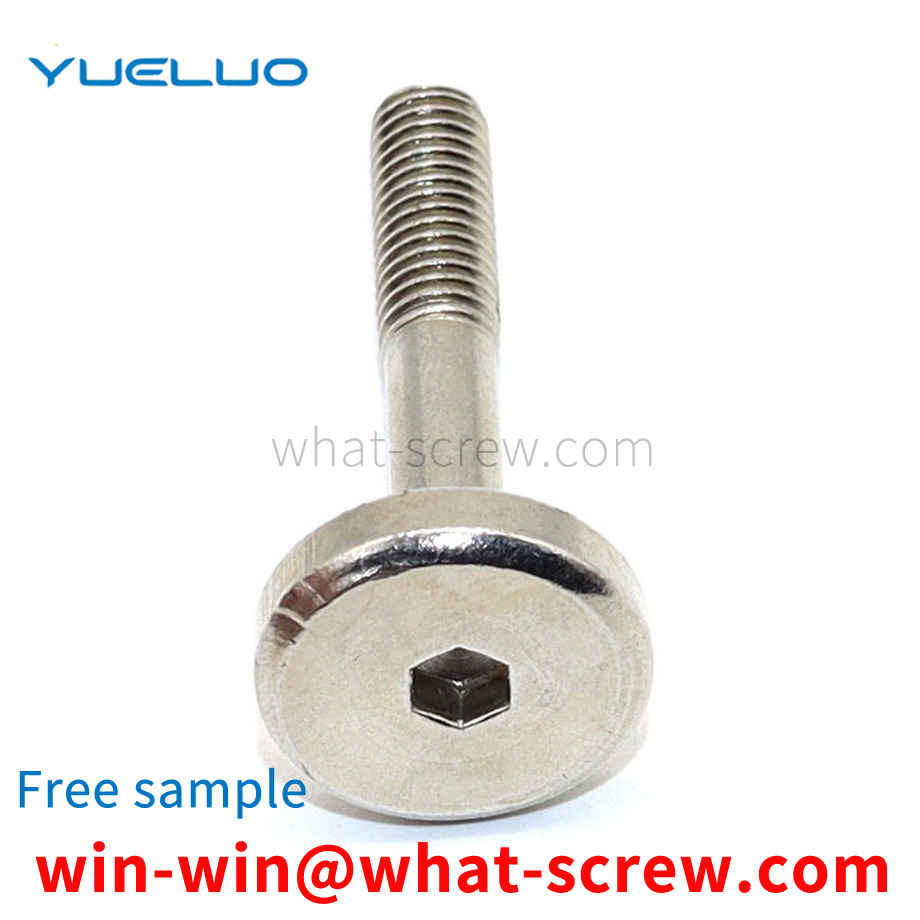When using screws, if you can understand the mechanical properties of screws first, then you can use screws better. Different types of screws have different mechanical properties, and the different mechanical properties lead to different occasions when screws are used. 1. Self-tapping screws: mechanical performance requirements 1. Heart hardness: standard value HRC28-38. When testing, take the section 1-2 times the diameter of the name from the tail. If the length of the name is too short, it can be embedded first, and then the hardness is measured. 2. Surface hardness: standard MIN HV450. 3. Carburized layer: standard 4#-6#: 0.05-0.18mm, 8#-12#: 0.10-0.23 mm, 14#: 0.13-0.28 mm. The main purpose of carburizing is to enhance the surface hardness and ensure the strength of the teeth. If the decarburization is too deep and the carburization is insufficient, the strength of the teeth will not meet the requirements, that is, the teeth will be damaged during the screw-in test. 4. Torque: standard specification 4#5#6#7#8#10#12#14#A tooth 14212835455696145AB tooth 142128354565102165. 5. Screw-in test: screw the self-tapping screw into a steel plate with a reserved test hole. The self-tapping screw should form a matching thread in the test plate, and the thread of the screw itself will not be deformed or damaged until the end. Tapered threads pass completely through the test plate. The screw-in test is only applicable to AB, B, BP and other types of self-tapping screws. It is stipulated in IFI that the test plate shall be prepared from semi-hard low-carbon cold-rolled steel, and the hardness of the steel plate is 70–85HRB in Rockwell. The standard specification of the steel plate, that is, the thickness, is shown in the table below. The test hole should be punched or drilled, and the tolerance is the specified nominal diameter (see the table below) ± 0.025mm. Specifications 6#7#8#10#12#1/4 Test plate thickness (mm) 1.85-1.953.12-3.234.68-4.84 Aperture (mm) ±0.0252.953.263.454.044.765.50.
Screws are often used on objects, such as data storage, to support the objects on a bracket. Since the item will vibrate during operation or when subjected to shock, if the shock is not minimized, the item will be damaged. Therefore, some cushioning elements with cushioning properties are applied to the article. The buffer is fixed to the object by the screw. When the object vibrates, the buffer will reduce the vibration, thereby reducing the damage to the object. However, since the buffer is exposed Therefore, when the object is installed or disassembled, the object is moving relative to the bracket, and the friction between the buffer and the bracket will cause the buffer to move. It is very easy to age, thus greatly reducing its service life. SUMMARY OF THE UTILITY MODEL In view of the above, it is necessary to provide a screw combination that can protect a buffer member with buffer performance to improve its service life. A screw combination includes a screw, an elastic retaining ring and a buffer, the screw includes a nut, a threaded portion and a neck formed between the nut and the threaded portion, the retaining ring It is fixed on the neck of the screw, the buffer is sleeved on the screw, and the screw combination further includes a cover set on the screw, and the cover includes a top and a forming part. In the shielding part of the top, the top is located between the nut and the retaining ring, and is blocked by the nut and the retaining ring so as not to be separated from the screw, and the shielding part covers the The retaining ring and the buffer element are slightly exposed from the shielding part. Compared with the prior art, the screw assembly of Guangdong Yueluo Hardware Industry Co., Ltd. protects the buffer by covering the buffer by the shutter, thereby increasing its service life.
At present, in the era of industrialization, rivets used in specific occasions, automobiles, and aviation industries can only rely on professional tools and equipment to complete the riveting method.
Countersunk rivet is a kind of part that uses its own deformation or interference connection to connect and position two objects in riveting. It is widely used in automobiles, vehicles, electromechanical products, aerospace products and other fields. When the countersunk head rivet is used, the head of the rivet sinks into the connected parts in whole or in part. This structure is mostly used for parts that require a smooth and smooth appearance. The standard structure of countersunk head rivets is specified in the national aviation standard, national standard and national standard, and the countersunk head rivets involved in these standards are all standard rotary structures.
As my digital TV technology becomes more and more mature, more and more people with digital-to-analog signal conversion function enter people's lives. Therefore, the number of production and processing is also increasing day by day. There are many requirements for the form, reliability and cost of PCB fixing screws in production. One of the existing fixing methods is to fix by means of bolts and nuts. The operation steps are to place the PCB board on the inner threaded copper column connected to the casing, and pass through the bolts with fine teeth. Screw holes on the PCB board, and then fix them on the copper posts with nuts. The connection method of this solution is reliable, but its manufacturing cost is high, and the copper column and the metal shell need to be screwed together, resulting in low production efficiency and high cost. In addition, there is also a common way that the PCB is supported by a plastic column, and the self-tapping screw is passed through the screw hole on the PCB board, and the PCB board and the metal bottom shell are connected by the self-tapping thread on the screw. The main disadvantage of this solution is that after the screw is fixed on the metal shell, the screw head is exposed at the bottom of the machine. If the user is not careful during use, the hand scratching phenomenon will occur, which will bring changes and harm to the user's use. . And when the machine slides on the desktop, if the screw head is too exposed, it will scratch the desktop. Therefore, how to provide a PCB fixing method with convenient operation, reliable connection and low production cost is a technical problem to be solved urgently in the industry.
We have many years of experience in the production and sales of screws, nuts, flat washers, etc. The main products are: flat head positioning pins, percussion flat cap Liuding GB867 stainless steel rivets, iron saddle elastic washers, flat cup flat head countersunk head screws and other products, we We can provide you with the right fastener solution for you.



















 Service Hotline
Service Hotline




